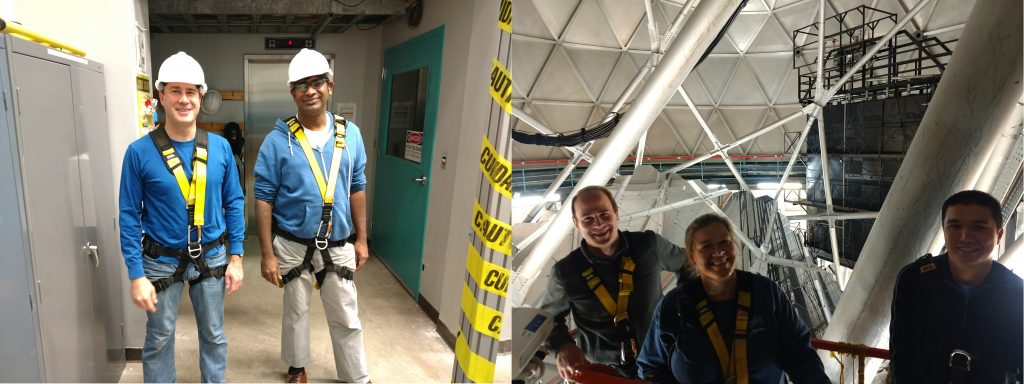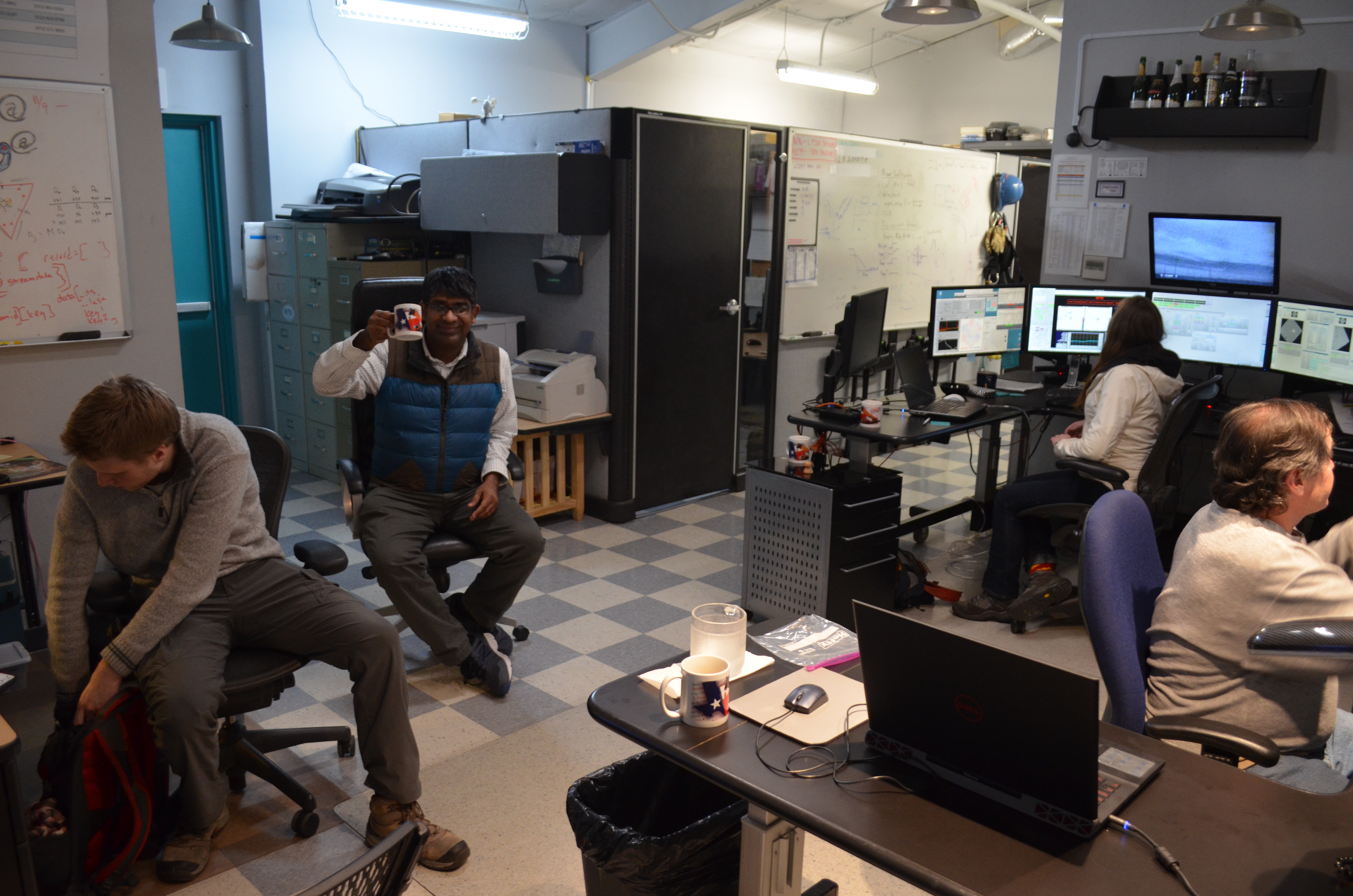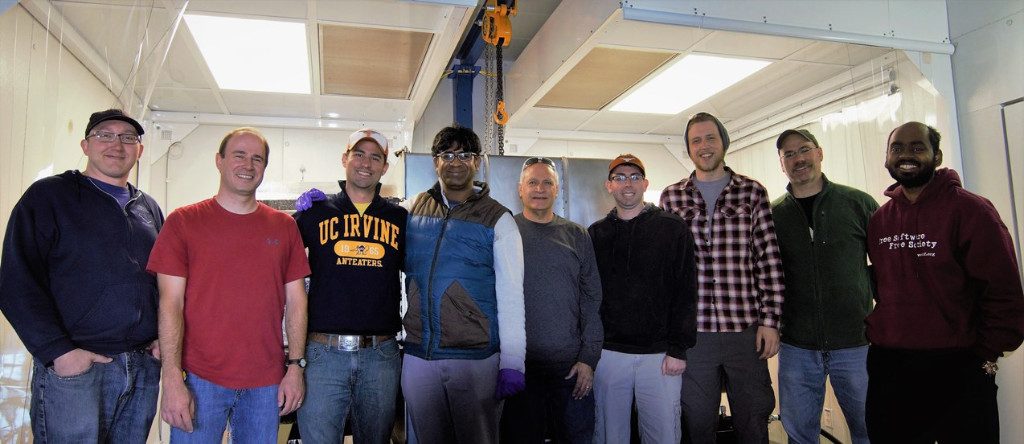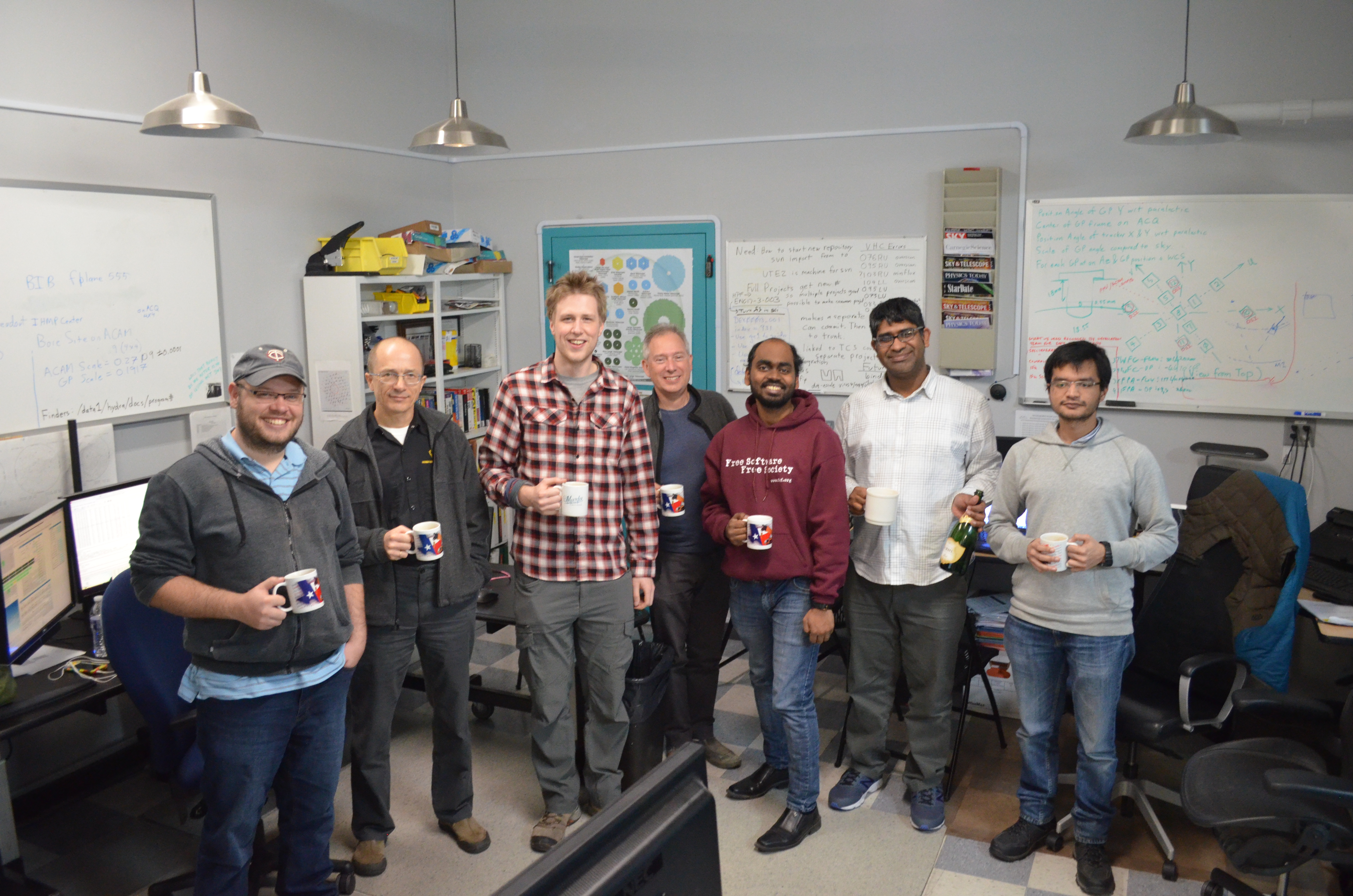Introduction
Things have been quiet here on the HPF blog for the last few months, but that has certainly not been the case in our lab! Our team has been working diligently, making the final push to deliver HPF to HET and commission the instrument. In this post, we are excited to announce that HPF has been installed at HET, and is now acquiring spectra on sky! Here are some highlights from delivery and commissioning.
Delivery and Installation
HPF was delivered from Penn State to McDonald Observatory on a temperature-controlled, air ride truck that was routed to avoid as many potholes and speed bumps as possible. After a three-day trip, it was carefully offloaded at HET and placed in the telescope basement. We made sure to capture all the action from multiple camera angles:
Once we had the instrument placed in the basement, we opened the vacuum chamber to verify that the optics had made the trip intact. While we could only admit a few team members for this task, rest assured that everyone else was nervously pacing the floor just outside!
Once the instrument was placed safely in its permanent home, the team spent approximately three weeks connecting and testing the various subsystems. These subsystems include the environment control system, the fiber optic feed, the calibration suite, and the near-infrared detector, which we have detailed in previous posts here.
Of course, the new wrinkle this time is that HPF is now attached to an actual telescope! Ensuring the whole system operated properly required sending a few brave team members above the primary mirror on a lift.

Outfitted with the proper personal protective equipment, HPF team members Chad Bender, Suvrath Mahadevan, and Sam Halverson accompanied HET Mechanical Engineer Emily Mrozinski to the telescope’s prime focus structure.
To put a long story short, HPF is now happy and healthy in the HET basement, and it is now time to get some spectra.
First Light
On the night of November 29-30 2017, HPF acquired first light on the M dwarf GJ 3470, which hosts a transiting exoplanet that astronomers believe has a blue sky. Here is what the star’s spectrum looks like to HPF:

HPF’s first-light spectrum of GJ 3470. Each set of three lines is a spectral order–a small section of the full spectrum–with the star’s spectrum in the middle, the spectrum of the night sky above it, and our wavelength calibration source below.
The first light spectrum wouldn’t have happened without great support from all of the talented staff at the Hobby-Eberly Telescope:

During first light observations on the night of Nov 29th: telescope operator Emily Bevins and resident astronomer Steve Odewahn hard at work to ensure HPF records high-quality spectra !
The following day, a subsection of the HPF team celebrated first light at the HET control room, alongside HET telescope operator Justen Pautzke, resident astronomer Sergey Rostopchin, Professor Gary Hill—and senior research scientist Phillip MacQueen who gladly took the photo for us !
HPF’s science commissioning has just started, and we will provide more updates as we fully characterize the system’s performance. For now, though, it is an exciting milestone to get starlight on the detector. With tantalizing new exoplanets being discovered all the time, and TESS just around the corner, it is a good time to be on sky!



 RSS - Posts
RSS - Posts